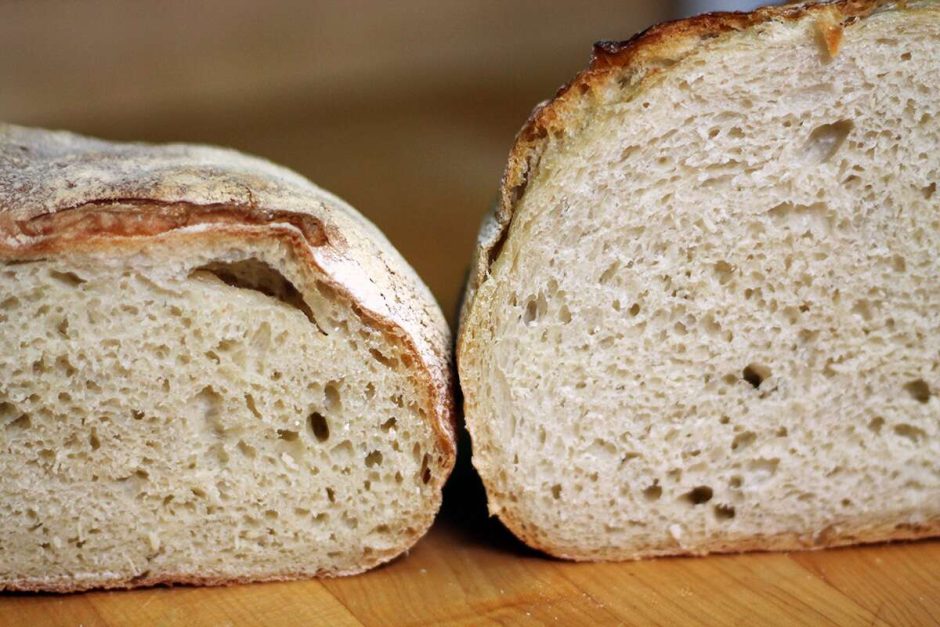Home-baking sourdough is an every week activity now and I need little encouragement to “bake two and gift one.” I have my go-to unleaven bread and ‘cloud’ breads (flat bread cooked in a pan rather than an oven), pizza bases, poolish yeast breads but I love the taste, texture and especially the crust of sourdoughs. Needless to say, I am very excited about the prospect of learning how to bake enriched-dough cinnamon buns at the end of this month.
If I were to reflect and organise my home-baked bread and sourdough experience, I would map out this journey in small steps and landmarks, so that one day I may share this hobby more widely with other like minded people, those with an interest in nutrition, in wellness, mindfulness and those that just love to eat humble, great tasting food. Once I am more confident in my own abilities, once I ‘know the dough’ and ‘can see it with my hands’ and when the baked outcomes are more consistent and reliable, maybe I could apply my educator expertise to helping others get started. Experience takes time to build, expertise even longer, and home-baked certainly makes you wait, practice and practice some more.
As for outcomes – this leads us to this post ‘In search of spring.’ Which went onto be ‘spring, belly and ear.’
Sourdough oven ‘spring’ is one of the holy grail of artisan sourdough baking along with that wondrous and elusive open crumb.
That burst of rising just after the dough is put in the oven and before the crust hardens. Puffing up to as much as a third of its size, producing a belly and an ear in a matter of a few minutes. The ‘belly’ is the rounded section arising from the oven spring. The ‘ear’ is the crusty edge.
A hopeful expectation that the sourdough will ‘spring,’ during the first minutes of baking, look great, as well as taste delicious – this is all part of the allure.
https://www.kristianstill.co.uk/wordpress/2023/10/23/why-sourdough-a-fermented-response/
I am confident and fairly happy with both my ambient (in a day, room temperature) and retarded (overnight long ferments in the fridge) sourdough. I have achieved some good results across the two schedules. Even when semi-successful, the taste and texture is almost always worth the effort. And I rarely mention the sound of the knife against crust – so worth the effort.
Below is this morning’s effort. Bake #12? The taste, crust, crumb are strong, however the oven spring and ear, although visually attractive, we are not yet artisan Instagrammable.

A few months later and maybe 20 or so bakes, much more spring, belly and ear, however, it would have liked to bake it longer.

I continue to keep notes on the weekly bakes, to understand why and how the results are, as they are? In search of the artisan ‘spring’ ‘belly’ and ‘ear’ here are my four lines of enquiry in order of perceived influence:
- Is my starter active and mature enough? Doubling in size, consistently within 4-6 hours of feeding? – Not quite.
- Yeasty, white winey and dairy / yoghurt notes
- Dome shaped and bumpy surface – bubbles at the surface – yes
- Spongey, thick, viscous – yes, however the bubbles are not yet “large” or at least not yet a honeycomb network or mousse.
- Stretchy and elastic – yes
- Lack of expertise
- Keep notes. Keep the same routine. Keep practising. Change only one thing at a time.
- I’m still working on my ability to create tension in the final shaping.
- Is the pre-heated oven hot enough? Too hot even? 230C?
- Once the bread is in the Dutch oven, in the oven, remember to reduce the temperature to 180C otherwise the crust can form too quickly leading to “tunnelling” along the top.
- Constraint: Time is pressured in the mornings and I tend to add the loaf once 230C is reached. Try at the weekend.
- Small Dutch ovens can be hotter – so bear that in mind.
- Gluten strength
- The dough passes the window pane test.
- With the retarded method, do I knead the dough long enough at beginning? Do I get sufficient folds in?
- Are the strength and folds enough?
- Shaping and tension (and score)- linked to gluten strength – is this why the retard loafs have better spring?
- The dough is still saggy wobbly – did I given the dough sufficient tension?
- Keep practising with the lame – 45% to horizontal with one smooth motion.
- Flour quality for the starter
- organic and some wholemeal, for the whole grain (50:50 mix).
- Flour quality for the dough
- To date I have only baked with basic Aldi (13% protein) and Tesco (12% protein) flour. Marriages bread flour and Shipton Mills organic #04 the shortlisted upgrade favourites.
- The dough is still quite wet? Is it over-fermented?
“Bake two, gift one,” has really brought a little joy to Fridays.
One thing I have noticed with the long, or slow, or overnight, or retarded proofing (8-10 hours) is a more consistent and more open crumb, with a more complex flavour. The crust requires a real effort when slicing, crisper and chewier. Now I also note, because amylases have converted the starches into simpler sugars, which brown better during baking, that this may also takes a little away from the spring.




Pingback: Home-baked bread to home-school sourdough (part v) leavening agents and fermentation processes – Edventures
Pingback: Home-baked bread to home-school sourdough (part iv) before baking – Edventures